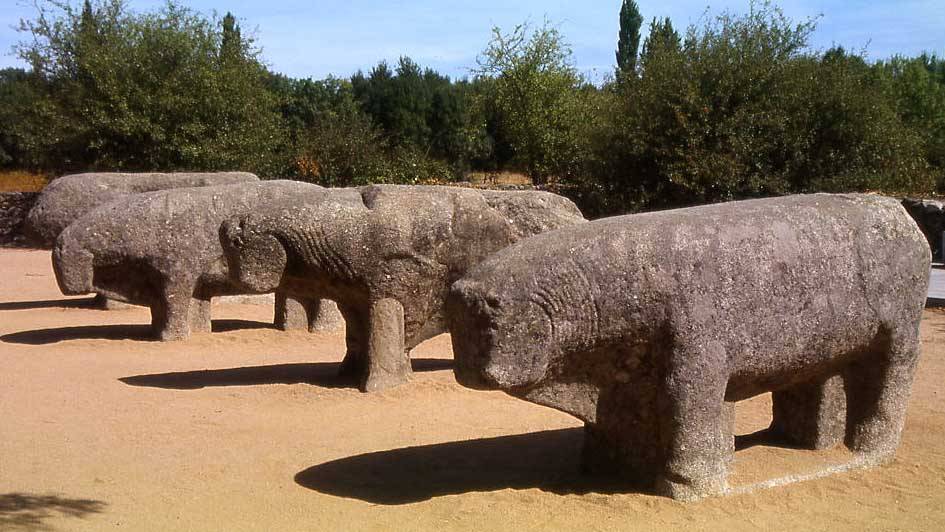The Bulls of Guisando are a set of ancient sculptures located in Spain. They depict four bulls, or verracos, and date back to the 2nd-3rd century BC. These granite figures are thought to have been created by the Vettones, reflecting the animalist religious practices of the time. The site gained historical significance due to the Treaty of the Bulls of Guisando in 1468, which recognized Isabella as the heir to the throne of Castile. The Bulls of Guisando stand as a testament to the pre-Roman history of the Iberian Peninsula and continue to intrigue historians and visitors alike.
Get your dose of History via Email
Historical Background of The Bulls of Guisando
The Bulls of Guisando are a mysterious relic from the past, discovered in the Guisando Valley of Spain. Their exact discovery date is unclear, but they have been known to the local population for centuries. The Vettones, a group of people in the Iberian Peninsula, are credited with creating these sculptures. Over time, the site has witnessed various historical events, including the aforementioned Treaty of the Bulls of Guisando. This pivotal moment in Spanish history marked the bulls not just as cultural artifacts but also as silent witnesses to a significant political event.
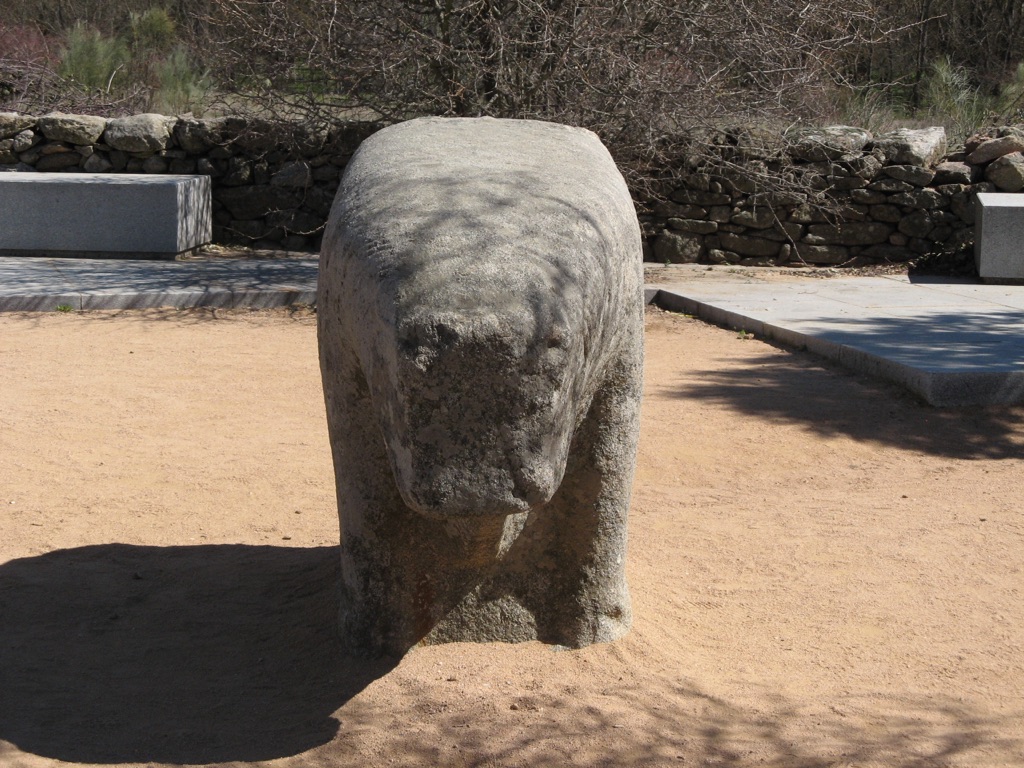
While the creators of the Bulls of Guisando are not documented with absolute certainty, the Vettones origin is widely accepted. The Vettones were known for their animalist sculptures, and the bulls fit this cultural expression. The sculptures have not been linked to any specific individual or group within the Vettone society, leaving their commission a matter of speculation. However, their craftsmanship suggests they were the work of skilled artisans.
There is no concrete evidence that the Bulls of Guisando were part of a larger settlement or that they were inhabited later. However, their strategic placement along ancient trade routes suggests they may have served as territorial markers or had some ritualistic significance. The area around the bulls does not show extensive signs of habitation, which further supports the theory of their symbolic rather than residential use.
The Bulls of Guisando have not been the scene of numerous historical events, but the Treaty of the Bulls of Guisando stands out. This agreement, signed at the site in 1468, resolved a succession dispute by recognizing Princess Isabella as the heir to the Castilian throne. This event had a profound impact on the history of Spain, leading to the unification of the Spanish kingdoms under Isabella and her husband Ferdinand II of Aragon.
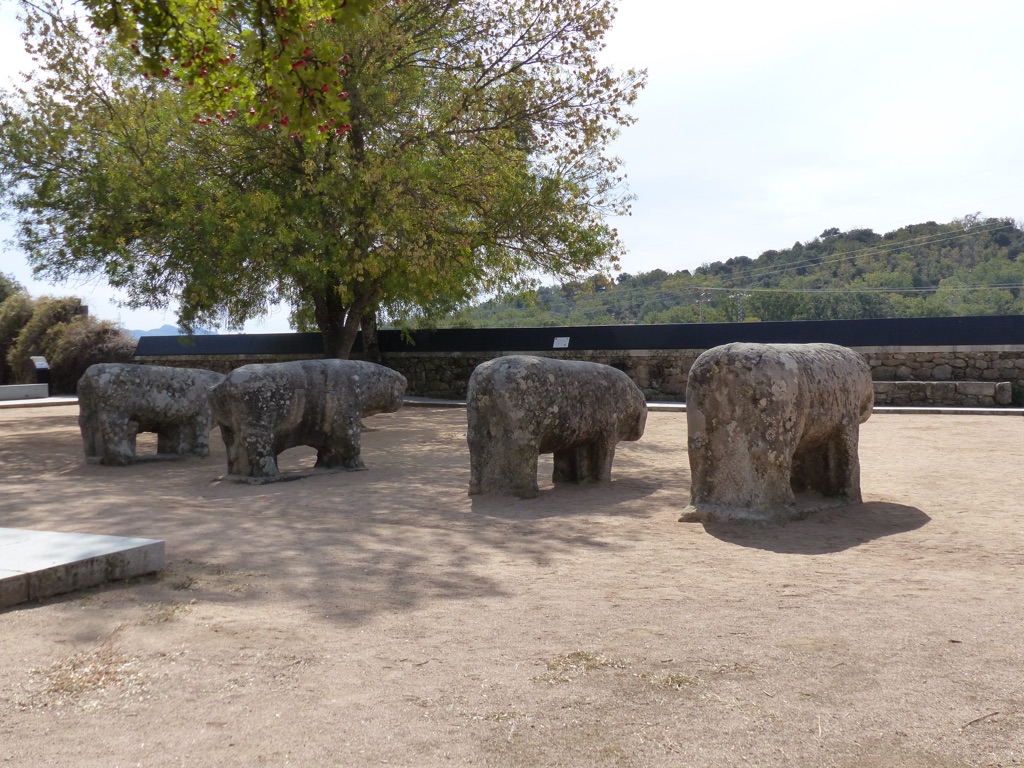
Despite their historical significance, the Bulls of Guisando were not subject to systematic study until relatively modern times. Archaeological interest in the site has increased over the years, with various studies attempting to understand the context and purpose of these sculptures. The bulls remain a cultural landmark and a source of pride for the local community, symbolizing the rich and ancient history of the region.
About The Bulls of Guisando
The Bulls of Guisando are a group of four stone sculptures representing bulls or verracos. They are carved from granite, a material abundant in the region and commonly used by the Vettones for such works. The sculptures are life-sized, with the largest bull measuring approximately 2.2 meters in length and 1.3 meters in height. Their stylized features capture the essence of the animals they represent, though they are not anatomically precise.
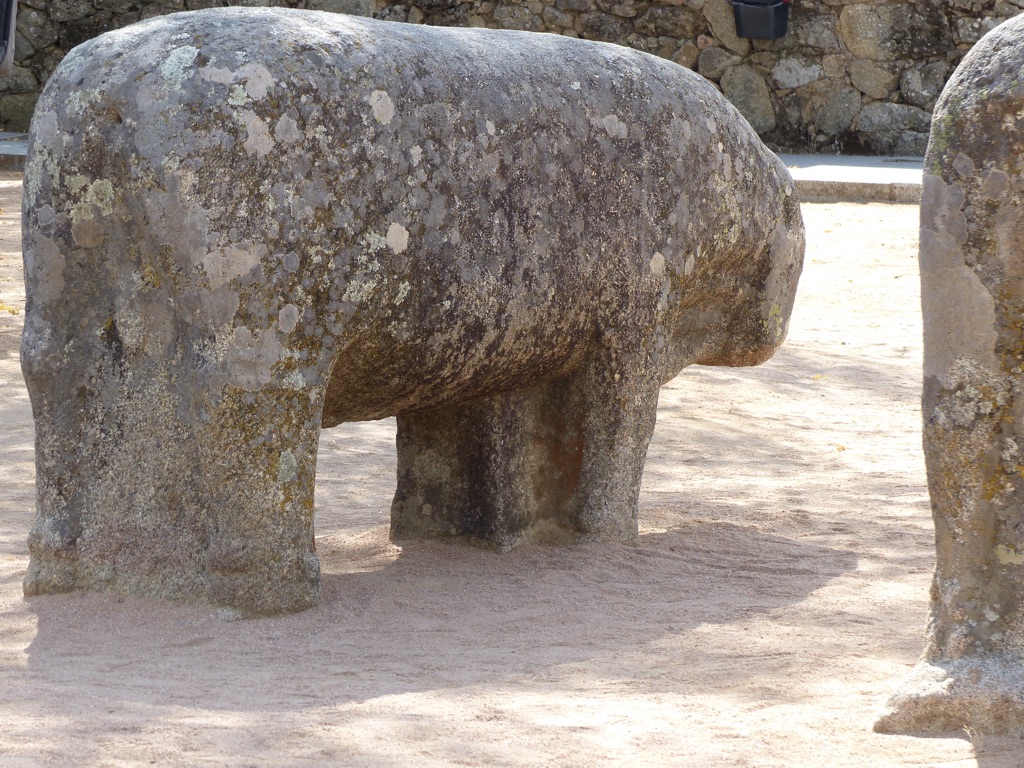
The method of construction for the Bulls of Guisando involved rough-hewing large blocks of granite and then refining the shapes to create the bull figures. The artisans used simple tools, such as chisels and hammers, to carve the details. The bulls are notable for their prominent muscles, stylized horns, and the enigmatic expressions on their faces. These features are characteristic of the animalist art of the Vettone culture.
The architectural highlights of the Bulls of Guisando are not just in their form but also in their placement. They are positioned in a line, facing westward, which may have astronomical or ritualistic significance. The arrangement suggests a deliberate design choice, possibly to align with certain celestial events or to mark a sacred space within the landscape.
Over the centuries, the Bulls of Guisando have withstood the elements, showing signs of weathering and erosion. Despite this, they remain in relatively good condition, allowing visitors to appreciate the skill and artistry of their creators. The site itself is open to the elements, with no protective structures covering the sculptures, which adds to their rustic charm and historical authenticity.
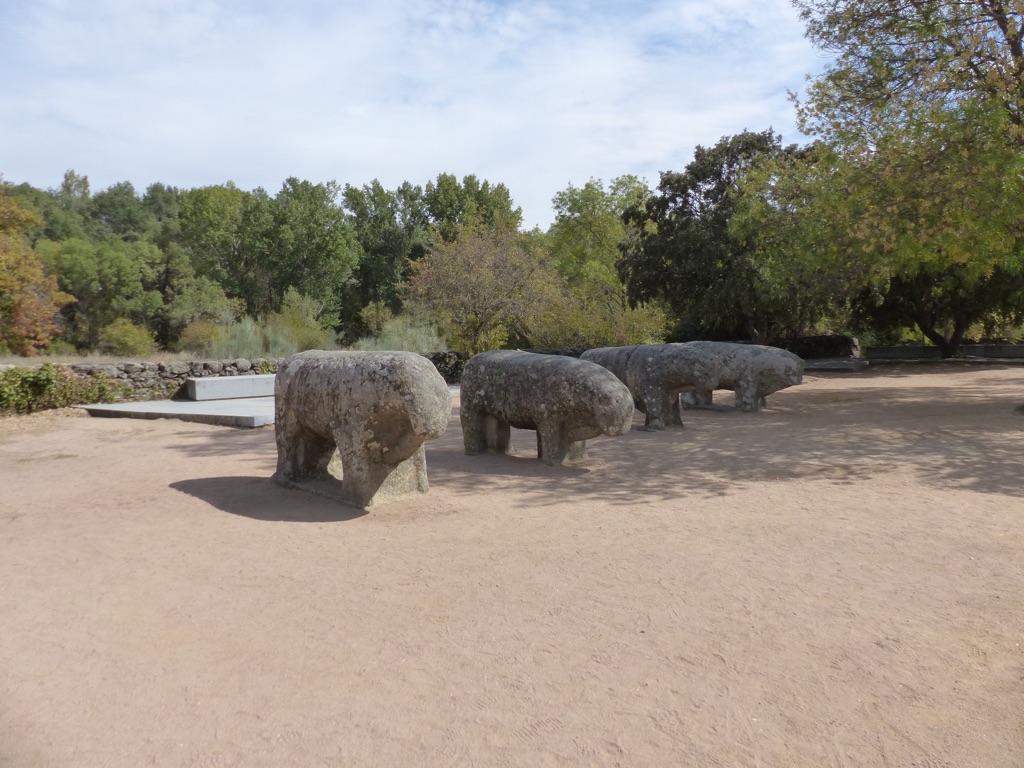
The Bulls of Guisando are not part of a larger complex or building: they stand alone in the landscape. This isolation has contributed to their mystique and has led to various interpretations of their purpose and significance. The lack of associated structures has also meant that the bulls are appreciated purely as sculptural works, without the context of a broader architectural setting.
Theories and Interpretations
Several theories have been proposed regarding the purpose and significance of the Bulls of Guisando. One prevalent theory is that they served as territorial markers, delineating the boundaries of the Vettones land. Their placement along ancient trade routes supports this interpretation, as they would have been visible to travelers and traders passing through the region.
Another theory suggests that the Bulls of Guisando had a religious or ritualistic function. The Vettones, like many ancient cultures, practiced animal worship, and the bulls may have been part of a larger sacred site or used in ceremonies. The westward orientation of the bulls could indicate a connection to the setting sun, which may have had spiritual significance.
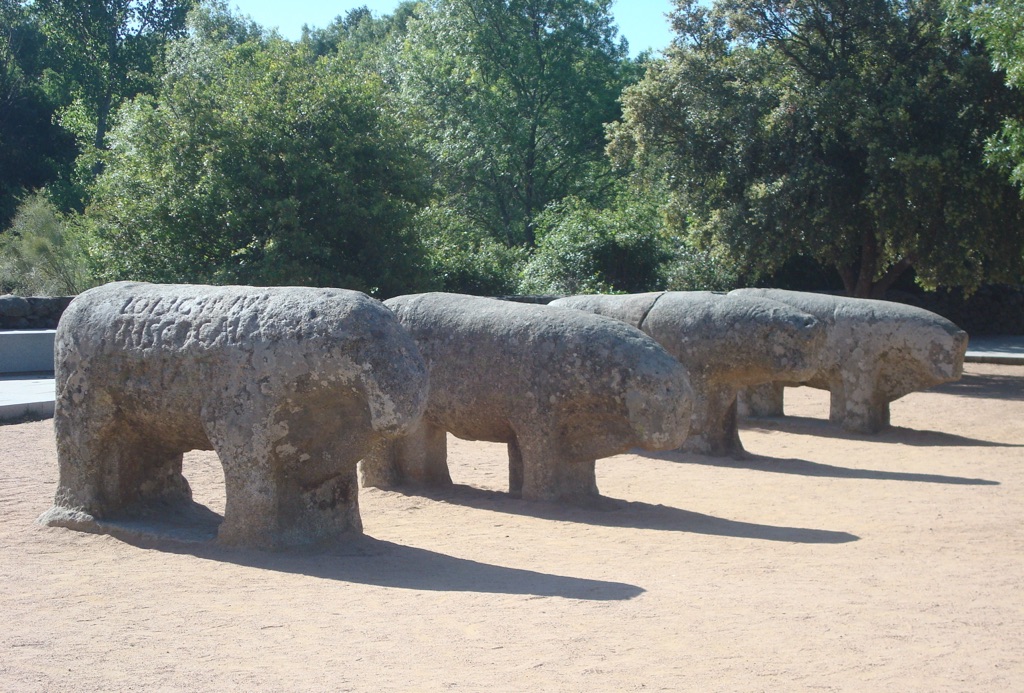
The mysteries surrounding the Bulls of Guisando extend to their age. While they are generally dated to the 2nd-3rd century BC, precise dating has been challenging. The lack of written records from the Vettone culture complicates efforts to match the sculptures to specific historical events or periods. However, the style and technique of the carvings are consistent with other known Vettone works from that era.
Interpretations of the Bulls of Guisando have also been informed by historical records, such as the Roman accounts of the Iberian Peninsula. These records provide context for the cultural practices of the Vettones, though they do not mention the bulls specifically. As a result, historians must piece together information from various sources to build a comprehensive understanding of the site.
Dating of the Bulls of Guisando has relied on stylistic analysis and comparison with other Vettone artifacts. No definitive scientific dating methods, such as radiocarbon dating, have been applied to the sculptures, primarily because they are made of granite, which does not contain organic material necessary for such tests. Instead, archaeologists have used the broader context of Vettone art and architecture to estimate the age of the bulls.
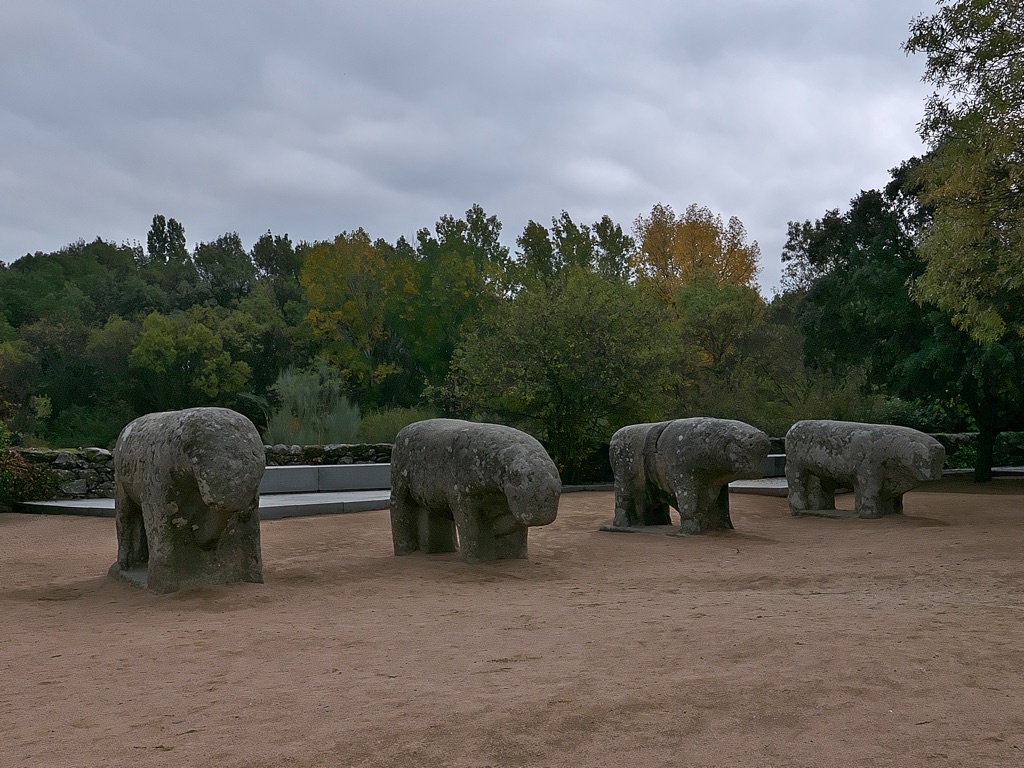
At a glance
Country: Spain
Civilization: The Vettones
Age: 2nd-3rd century BC

